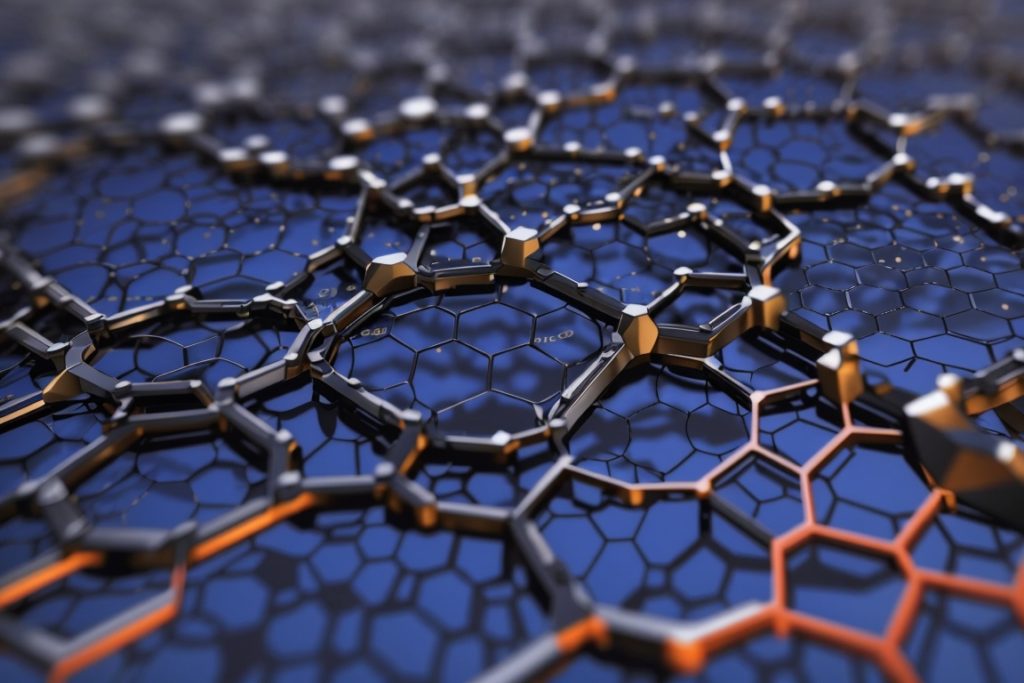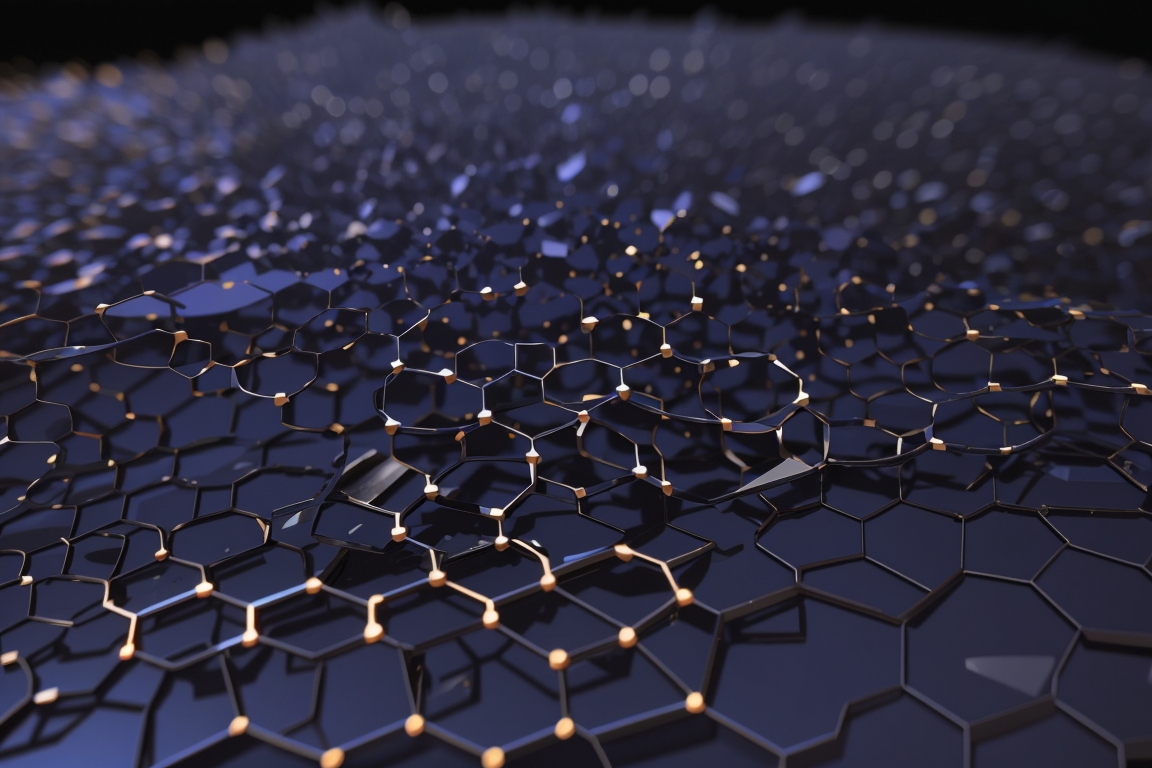Graphene, a remarkable material composed of a single layer of carbon atoms arranged in a hexagonal pattern, has been hailed as a game-changer in the realm of science and technology. Discovered only a few years ago, this wonder material exhibits extraordinary properties such as unparalleled strength, flexibility, and conductivity. Scientists and engineers across the globe are constantly uncovering new ways Graphene can revolutionize various industries and propel humanity into a more sustainable and efficient future.
The potential applications of Graphene are vast, ranging from advanced electronics to cutting-edge medical devices. As a conductor of electricity and heat, it has the potential to dramatically improve the efficiency of solar cells, batteries, and even wearable devices. Its remarkable strength and flexibility make it a promising candidate for producing lightweight yet durable materials, which can be used in the automotive, aerospace, and construction industries. Additionally, Graphene’s ability to act as a proton exchange membrane in fuel cells paves the way for innovative solutions, such as producing fuel from the air.
As research and development surrounding Graphene continue to advance, it becomes increasingly clear that this novel material will play a pivotal role in laying the foundation for numerous future technologies. With its astounding properties and boundless potential, Graphene represents a critical component in shaping a brighter, more sustainable world for generations to come.
The Fundamentals of Graphene
Graphene is a remarkable single-atom-thick sheet of carbon atoms arranged in a honeycomb structure. This two-dimensional, extremely lightweight material has some extraordinary properties, making it a potential game-changer for various industries.
Strength and elasticity: Graphene is incredibly strong and elastic. In fact, it is considered the world’s strongest material. Despite its thinness, graphene’s strength surpasses that of steel, making it a promising component for future materials and structures.
Conductivity: Graphene’s remarkable electrical and thermal conductivity makes it suitable for a wide range of applications. Its electrical performance is significantly better than that of copper, which can lead to more efficient electronics and innovative technologies.
Transparency: Graphene exhibits excellent transparency levels, making it a suitable candidate for flexible and transparent electronics. This property can be advantageous in developing new display technologies, solar panels, and windows.
Various industries are expected to benefit from the incorporation of graphene into their products and processes. Some of these areas include:
- Electronics: The exceptional electrical conductivity of graphene makes it ideal for creating faster and more efficient electronic devices, such as transistors and batteries.
- Energy storage: Graphene’s high surface area and conductivity make it attractive for supercapacitors, batteries, and fuel cells, offering improved energy storage and faster charging capabilities.
- Medical applications: Graphene’s biocompatibility and versatile properties make it a promising material for drug delivery, tissue engineering, and disease detection.
- Aerospace and automotive sectors: The combination of strength, lightweight, and conductivity properties offers tremendous potential in designing lighter, stronger, and more energy-efficient vehicles and aircraft.
In summary, graphene’s unique and remarkable properties make it a prime candidate for a variety of future technologies, driving advancements and improvements across numerous industries. With ongoing research and development, the full potential of graphene is yet to be uncovered.

Current Uses of Graphene
Graphene is considered a wonder material due to its unique properties, including exceptional strength, high electrical and thermal conductivity, and incredible thinness. Its potential applications are numerous and diverse, impacting various industries. In this section, we will discuss some of the current uses of graphene.
One notable application of graphene is in the field of electronics. Due to its excellent electrical conductivity, graphene has been used to create transistors that offer improved performance compared to traditional materials. Additionally, its thinness and flexibility make it an ideal material for creating foldable and wearable electronics, such as smartphone screens.
Graphene is also being utilized in the energy sector. Its extremely high surface-area to volume ratio makes it an extremely promising material for use in batteries, supercapacitors, and even fuel cells. Devices that use graphene have the potential to store more energy and charge faster compared to their traditional counterparts.
Another application of graphene can be found in the area of desalination. Graphene filters have shown great promise in removing salt and other impurities from water, potentially revolutionizing the way we provide potable water to populations in need. The optical transparency and electrical conductivity of graphene also make it an attractive option for use in solar cells, improving both their efficiency and durability.
In the pursuit of creating lighter and stronger materials, graphene has emerged as a leading contender. Its incredible strength-to-weight ratio has led to its use in the development of composite materials for various industries, including aerospace, automotive, and sporting goods. These composites offer improved mechanical properties while maintaining a lighter weight, aiding in energy efficiency and performance.
To summarize, the current applications of graphene span a wide range of industries, from electronics and energy to water treatment and advanced materials. With its unique properties and vast potential, graphene continues to shape the landscape of future technologies in various fields.
The Future of Graphene in Technology
Graphene in Electronics
Graphene has shown great potential in the world of electronics due to its exceptional electrical conductivity. Its unique hexagonal honeycomb structure allows for efficient transfer of electrical charge carriers, enabling the manufacture of fast and energy-efficient devices. Examples include graphene-based field-effect transistors and processors, which could potentially outperform their silicon counterparts in terms of speed and power consumption. Additionally, with its high thermal conductivity, graphene may play an essential role in developing advanced heat-management solutions for intricate electronic systems.
Graphene in Energy Storage
The application of graphene in energy storage is transforming the development of next-generation batteries and supercapacitors. Due to its high surface area, graphene can effectively store more energy in a smaller space. This translates to faster charging times, longer lifespans of energy storage devices, and broader capacity for renewable energy solutions. Researchers are working on graphene batteries that feature quicker charging times, higher energy density, and increased cycle life compared to traditional lithium-ion batteries.
Graphene in Medicine
Graphene’s unique properties make it a promising material in the medical field. Studies have shown that layers of graphene can block mosquitoes’ ability to sense skin chemicals, offering a novel non-chemical approach to mosquito repellents. Moreover, graphene-based sensors can detect biomolecules and provide rapid diagnostic results by identifying subtle changes in electrical conductance, helping in early detection of diseases.
Graphene in Aerospace
The aerospace industry can significantly benefit from the incorporation of graphene in its materials and systems. The material’s unmatched strength-to-weight ratio makes it ideal for creating lightweight yet durable components, vastly improving fuel efficiency, and reducing overall manufacturing costs. Additionally, graphene composites can shield sensitive electronics from electromagnetic interference and enhance thermal management, leading to next-generation aerospace technologies with superior performance and reduced environmental impact.
Practical Challenges and Solutions
Manufacturing Challenges
Producing graphene on an industrial scale has been a challenge due to the different techniques involved, each with its own limitations. Graphene can be synthesized from graphite, which is usually oxidized into graphene oxide (GO). However, some of these methods can result in poor-quality graphene or require expensive equipment and hazardous chemicals.
To overcome these challenges, researchers are developing new methods for producing high-quality graphene, such as chemical vapor deposition (CVD) and mechanical exfoliation. These methods have shown promise in scaling up graphene production while maintaining its exceptional properties.
Environmental Impact
The environmental impact of graphene production is another concern. Traditional graphene synthesis methods, such as the Hummers method, involve the use of harsh chemicals which can be harmful to the environment. Moreover, the disposal of graphene waste has not been thoroughly explored, raising questions about its long-term ecological impact.
Addressing these concerns, scientists are working on green methods for synthesizing graphene, such as electrochemical exfoliation or using renewable resources like biomass and waste products. Additionally, studies are being conducted to evaluate the potential environmental impact of graphene and develop strategies for recycling or disposing of it in an environmentally friendly manner.
As new methods and techniques continue to emerge, the challenges associated with graphene production and its environmental impact can be mitigated, paving the way for its widespread adoption in various industries.
Conclusion
Graphene, the thinnest and lightest material known, has the potential to revolutionize our future due to its exceptional properties. Being approximately 300 times stronger than steel, it is also an excellent conductor of electricity, surpassing copper, and of heat, outperforming diamonds1. Furthermore, graphene is bendable, stretchable, transparent, and waterproof, making it suitable for a wide range of applications2.
Considering the versatile characteristics of graphene, the prospects of its integration into various technologies are both extensive and exciting. For instance, graphene can replace heavier metals in applications like antennas, paving the way for better communication devices that are lighter, cheaper, and more eco-friendly3. The possibilities for graphene’s adoption in new technologies are vast, touching fields from electronics to energy storage and much more.
Despite the numerous applications, it is essential to approach the subject of graphene with both enthusiasm and caution. While the possibilities are vast, graphene-based advancements are still in their developmental stages4. Nevertheless, the ongoing research and innovation will undoubtedly contribute to shaping the future of technology with the help of this remarkable material.
Footnotes
- https://www.scienceabc.com/innovation/material-going-change-future.html ↩
- https://unfoldanswers.com/present-and-future-of-graphene-technology/ ↩
- https://www.allaboutcircuits.com/news/everything-you-need-to-know-about-the-future-of-graphene/ ↩
- https://www.extremetech.com/extreme/211437-extremetech-explains-what-is-graphene ↩

